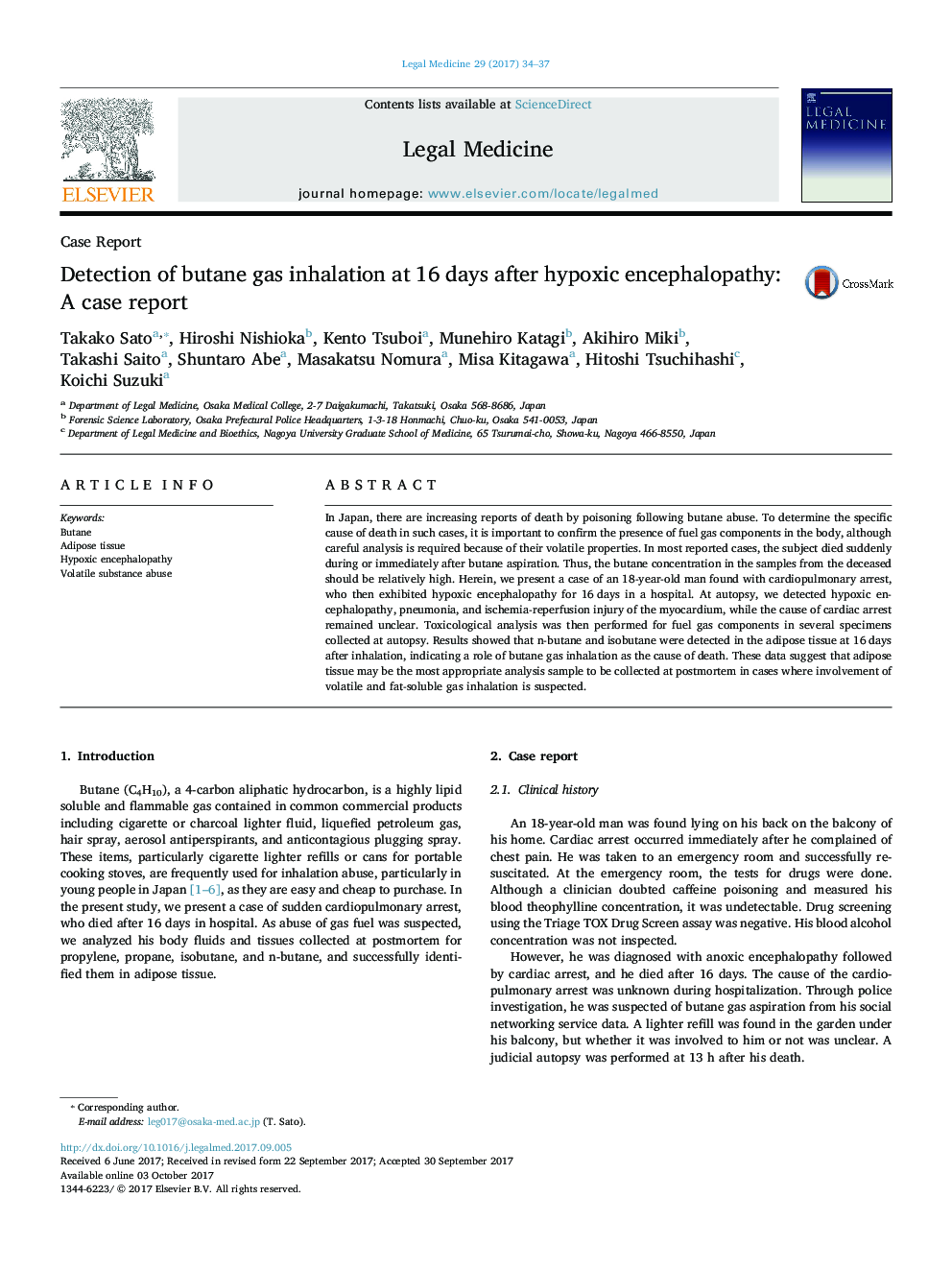| Article ID | Journal | Published Year | Pages | File Type |
|---|---|---|---|---|
| 6463095 | Legal Medicine | 2017 | 4 Pages |
â¢We report a case of CPA after suspected butane inhalation, who died after 16 days.â¢We successfully identified n-butane and isobutane in adipose tissue at postmortem.â¢Adipose should be the first choice if the deceased survived for a long period.
In Japan, there are increasing reports of death by poisoning following butane abuse. To determine the specific cause of death in such cases, it is important to confirm the presence of fuel gas components in the body, although careful analysis is required because of their volatile properties. In most reported cases, the subject died suddenly during or immediately after butane aspiration. Thus, the butane concentration in the samples from the deceased should be relatively high. Herein, we present a case of an 18-year-old man found with cardiopulmonary arrest, who then exhibited hypoxic encephalopathy for 16Â days in a hospital. At autopsy, we detected hypoxic encephalopathy, pneumonia, and ischemia-reperfusion injury of the myocardium, while the cause of cardiac arrest remained unclear. Toxicological analysis was then performed for fuel gas components in several specimens collected at autopsy. Results showed that n-butane and isobutane were detected in the adipose tissue at 16Â days after inhalation, indicating a role of butane gas inhalation as the cause of death. These data suggest that adipose tissue may be the most appropriate analysis sample to be collected at postmortem in cases where involvement of volatile and fat-soluble gas inhalation is suspected.
